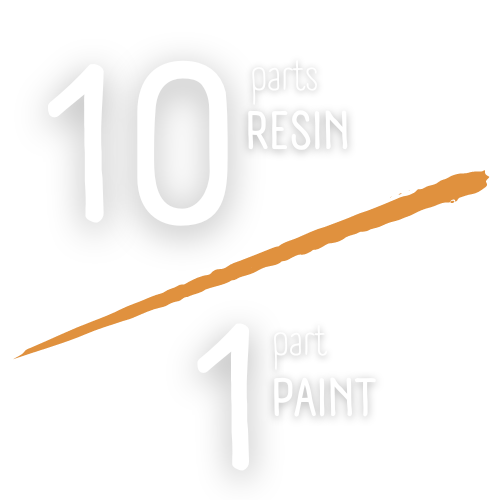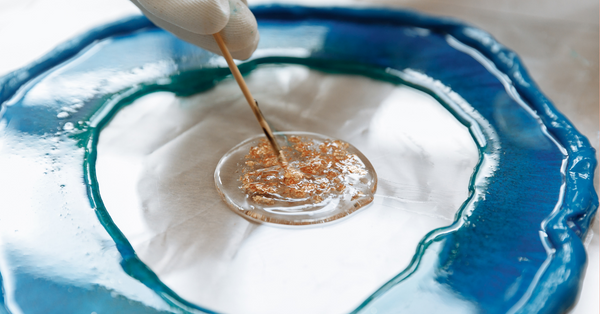
A lot of artists are curious about whether they can mix acrylic paint with resin. The short answer is yes, you can! But there are a few things to keep in mind if you want to create beautiful and vibrant resin pieces by coloring them with acrylic paint.
Here are some tips & tricks to get the best results when mixing acrylic paint with resin, a step by step guide on how to color resin with acrylic paint, and some dos and don’ts to pay special attention to!
TABLE OF CONTENTS
- Tips for Mixing Acrylic Paint with Resin Successfully
- The Pros & Cons of Using Acrylic Paint to Color Resin
- How to Color Resin with Acrylic Paint – A Step-by-Step Guide
- Dos and Don’ts of Mixing Acrylic Paint with Resin
- What Else Can You Use to Color Resin?
- Frequently Asked Questions
Tips for Mixing Acrylic Paint with Resin Successfully
Using acrylic paint to bring beautiful colors to your resin projects is becoming increasingly popular. However, not doing it correctly can affect how the resin sets. Before we go through step by step how to properly mix acrylic paint with resin, here are a few tips to make sure you get a great final result:
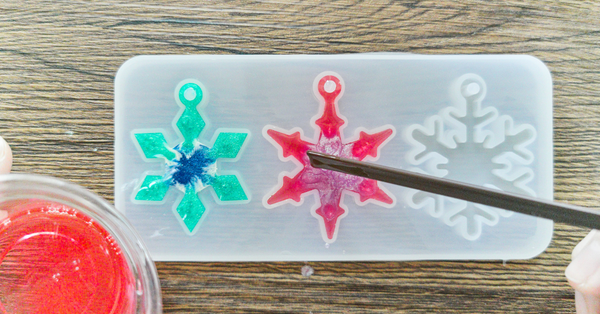
Choose the Right Acrylic Paint to Mix With Your Resin
When adding acrylic paint to resin, it is important to use a high-quality paint. Cheap acrylic paint will not adhere well with the resin and may even react with the curing process, resulting in a poor final product.
Golden Fluid Acrylic Paints are among the most popular paints for coloring resin. Their low viscosity and high pigment concentration help in giving an even, vibrant and long-lasting color to your resin pieces.
Use the Right Ratio of Paint to Resin
When you are mixing your resin and acrylic paint, it is important to avoid using too much or too little. Too much paint will oversaturate your resin and create curing problems. On the other hand, too little will not color the resin properly. Your color will appear very thin (of course, if that is what you want, go for it!).
Use a 1:10 ratio of acrylic paint and epoxy resin. This proportion creates a smooth and rich color that still sets properly.
Choose the Right Type of Resin
Epoxy resin is quickly becoming one of the most preferred products for coloring with acrylic paint. Not only does epoxy provide the jewel-like shine that we all love, but it also has a few advantages over traditional UV resin too.

Epoxy holds color better than UV resin. It’s considerably more durable and affordable. It also doesn’t require any special equipment for curing (like a UV lamp), so it’s a great option for crafters on a budget.
In short, if you want to get the most beautiful finish with your acrylic paint, epoxy resin is definitely the way to go. If you’re using UV resin, better to invest in some Mica Powders to color your resin for a long-lasting finish.
The Pros and Cons of Mixing Resin with Acrylic Paint
Before bringing a resin into your creative space, consider all the pros and cons of mixing it with acrylic paint. This will help you determine if it is the best fit for your envisioned art piece or if it could do more harm than good.

PRO: Acrylic Paint is Easily Accessible and Affordable
One of the best things about using acrylic paint to color your resin is that it is both easily accessible and affordable. You can experiment with a variety of colors without risking a lot of money. Plus, acrylic paint comes in a tremendous amount of colors, making there countless combinations you can play around with.
You can also texture your paint with embellishments like glitter to get some really cool effects. Just be sure to use a glitter that’s compatible with resin like this set of micro glitters.
PRO: Acrylic Paint is Colorfast
Acrylic paint is considered colorfast in epoxy resin and won’t fade over time like some other types of paint or colorants might (like alcohol inks). It will not discolor when exposed intense light, which makes it a great choice for a resin colorant if your piece is going to be exposed to the elements.
CON: Acrylic Paint Creates a Matte Finish
One of the downsides to using acrylic paint with resin is how it creates a more matte appearance. Many resin users LOVE how resin provides a glossy finish to their artwork. However, when you mix acrylic paint directly into your resin, the matte texture of the paint takes hold, and you will notice that your resin is no longer as translucent.
If you’re looking for a really shiny finish, better to opt for resin dyes.
Acrylic Paint May Cause Issues with the Curing Process of Resin
Acrylic paint is water-based, so you need to be careful how much you mix into your resin. Water and resin do not mix well. The water can change the viscosity of the resin, resulting in a thinner and less durable mold. Additionally, if you accidentally overdo it, your resin project will not cure or set properly.
Remember the rule: If you are using acrylic paint to add color to your resin, make sure you use 10% or less acrylic in your epoxy resin.
How to Mix Acrylic Paint with Resin: Step by Step
Using acrylic paint to bring beautiful colors to your resin projects is becoming increasingly popular. However, as we mentioned above, not doing it correctly can affect how the resin sets. So, if you are thinking about giving it a go, use our step-by-step guide to avoid ruining your art piece.
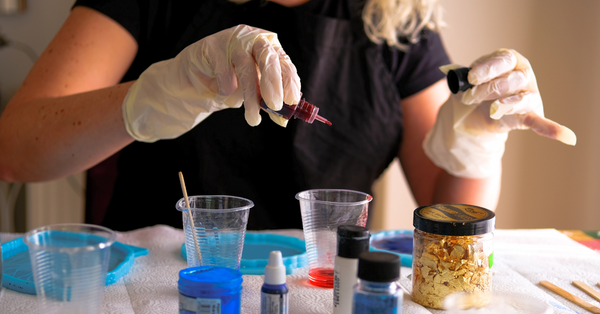
STEP #1 – Take the Proper Safety Precautions
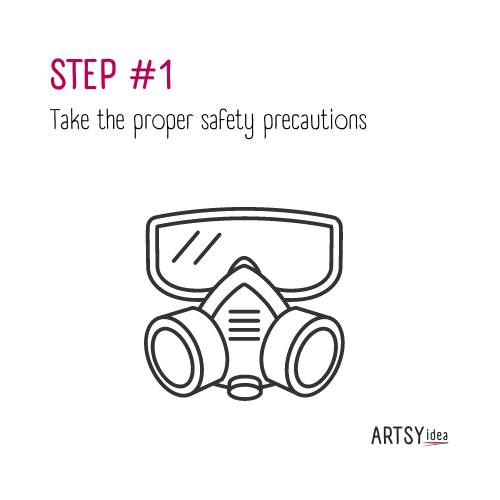
Start by making sure that your workspace is well ventilated, since working with resin can be hazardous to your health. Make sure to read the Safety Data Sheet of your resin and read the instructions to make sure you take the proper safety precautions.
Typically, this will involve putting on work gloves, goggles, and a respirator or face mask so that your hands, eyes, and lungs stay safe.
You may even want an additional layer of clothing over whatever you’re working in just to give yourself an extra barrier against any exposure. Finally, don’t forget to throw down some plastic sheeting on anything underneath your workspace as well – better to air on the side of caution!

We recommend using a non-toxic, low-odor epoxy resin such as Naked Fusion or Unicone Art. They both are VOC-free, food-safe, UV & Heat-resistant, and give a clear jewel-like finish (no yellowing!).
STEP #2 – Prepare Your Resin and Acrylic Paint
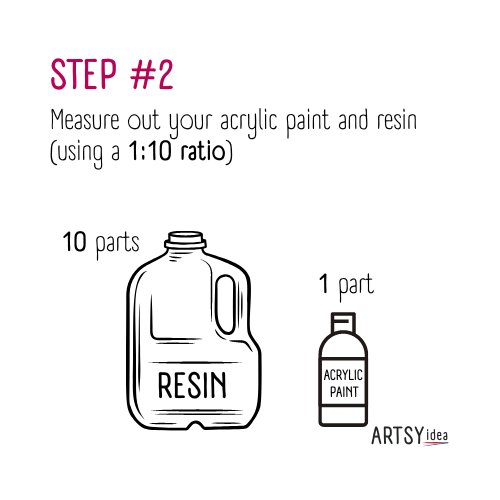
Measure out the amount of acrylic paint and resin required separately: 1 part paint to 10 parts resin.
Mix your resin according to the instructions. Before you add your acrylic paint to the resin, give it a good stir and make sure there are no lumps of pigment.
Acrylic paint works best with epoxy resin, which usually comes in two-parts: resin and a curing agent. Typically, you use a 1:1 ratio (but check the instructions first!) If you decide to use UV resin, we recommend coloring your resin with Mica Powders instead of paint as the colors will hold much better.
STEP #3 – Mix Your Acrylic Paint with Your Resin
Carefully add your paint to your resin and stir together gently until completely combined (this usually takes around 30 seconds to a minute). Best to test this on a small amount first before coloring all of your resin.
Make sure that there are no clumps in the pigment that could affect the look of your final piece, just be careful not to over-stir!
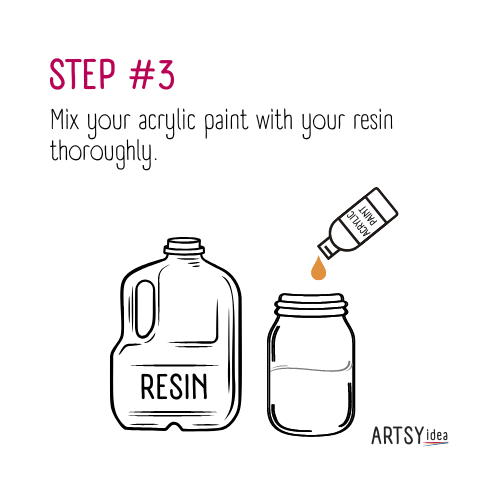
STEP #5 – Pour Your Colored Resin into Your Molds
Finally, pour the paint into molds or shape it as desired.
Allow to cure completely before enjoying the results of your handiwork!
Note: The curing process for epoxy takes on average 24 hours to cure 95%, 72 hours for fully cured. Check the instructions of your resin.

Dos & Don’ts of Mixing Acrylic Paint with Resin
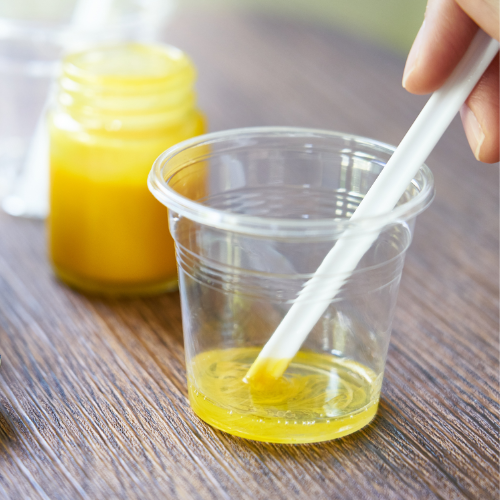
Now that you have a solid grasp on how to mix acrylic paint with resin, here are a few tips to keep in mind:
Choose epoxy resin over UV Resin because it holds the color better
Always wear protective gear such as gloves (nitrile or vinyl, not latex) and eye protection when working with resin
Use quality acrylic paint or it won’t evenly spread throughout the resin
DO NOT pour too much paint in your resin. Stick to a 1:10 ratio of acrylic paint and resin.
Mix your acrylic paint and resin thoroughly. Make sure there are no clumps of pigment left.
What Else Can You Use to Color Resin?
Resin Dye or Pigment

Because they are actually designed for use in resin, resin dyes are one of the best options for coloring resin. Resin dyes and pigments are generally very concentrated so you don’t need to use much tint to get great depth of color.
They have excellent colorfastness, so there is less risk of the color changing or fading due to heat, sun exposure, or time, which can be an issue with other colorants (like alcohol inks).
Liquid resin dyes also produce vibrant colors and can be used with clear or pigmented resin for a vivid final product, and allow you to incorporate beautiful swirls and marbled patterns throughout your artwork that you can’t replicate with other methods of coloring resin.
Mica Powder

A natural stone mineral, mica is famous for its shiny flakes. Its colorful powder can then be used to tint your resin, and it’s a popular choice if you want to add some sparkle to your resin pieces! You can use mica powder with both epoxy and UV resin.
Using Mica Powders is a really a great way to let your creativity run wild: you can mix and match different hues, get creative with shades and shine, and even add fun ingredients like glitter. Best of all, mica powders disperse evenly in the resin so you don’t have to worry about clumps or unevenness (like you do with eyeshadow, for example). They’re also inexpensive.
Alcohol Inks
Alcohol inks are a fun and easy way to add a splash of color to your resin projects. The inks are made with a blend of dye, which bonds with the resin as it dries. When you add the alcohol ink to your resin, the water evaporates quickly, leaving behind tiny pools of concentrated pigment.
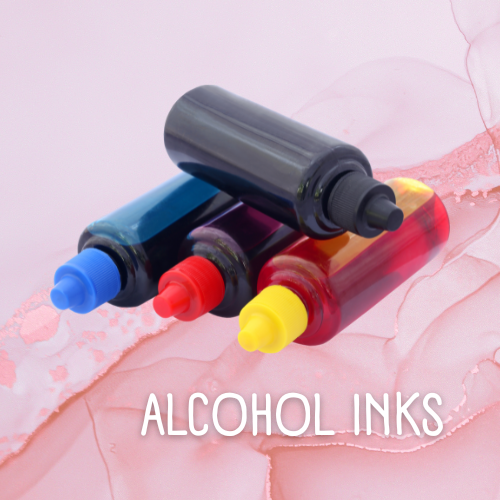
As the water from the ink evaporates, it also creates air pockets within the resin, adding depth and vibrancy to your project.
A popular brand of alcohol inks for coloring resin are Ranger inks. Users assure the colors are vibrant while keeping the transparent quality of the resin, and you need very little of the ink for full coverage so while the bottles are small, they last a while!

Jacquard Piñata Alcohol Inks are another incredibly popular ink for coloring resin because of their vibrant, transparent brilliance. As many novice resin artisans know, mixing white pigment into resin is a challenge and often leads to murky or semi-opaque results. The Piñata white ink is an effortless way to achieve an opaque and even coverage that makes it easy to get creative with layering. It fades rapidly when exposed to open air giving way to a marble effect that seems right out of a fairytale!
Acrylic Inks
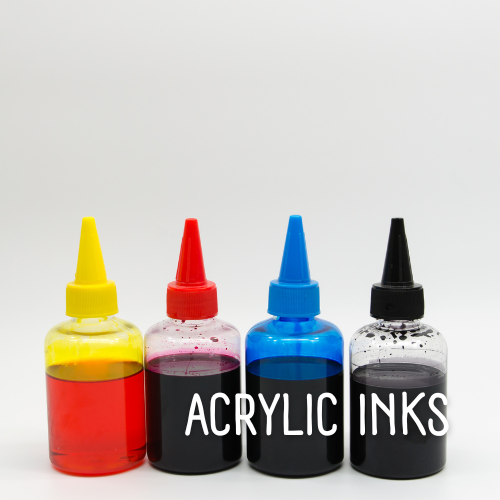
Alcohol ink can fade with time if left in direct sunlight. Acrylic Ink, on the other hand, uses pigments that do not fade. Therefore, it is lightfast and resistant to fading from UV rays.
So, if you are creating art or decorating pieces that will be used outside or have a lot of direct sunlight, you should consider using Acrylic Ink for the project instead of Alcohol Ink.
Eyeshadow

If you own a colorful or glittery eyeshadow palette, you can use it to tint both your epoxy resin and your UV resin. Just use a stiff brush to remove the powder from the palette, then grind it as fine as you can get it (a mortar and pestle is useful for this). This will help avoid any clumps appearing in your resin.
Just be warned that not all eyeshadow is made equal – some contain more fillers than others so there is a chance it will not bind well with the resin. Before tinting all of your resin with eyeshadow, test it on a small batch first.
Frequently Asked Questions
What happens if you mix acrylic paint with epoxy resin?
Mixing acrylic paint and epoxy resin is a popular choice for resin artists. It is important, however, to do it properly with the correct proportions. This will ensure that the water in the paint does not react with the resin and create curing problems.
Can you mix oil paint with epoxy resin?
No, you should avoid using oil paint with your epoxy resin. The oils found in oil paint react poorly to the resin. Your resin will most likely not harden or may harden unevenly. You will also notice that your final project will have large spots of uneven coloring.
What can you use to color epoxy resin?
In the process of coloring your epoxy resin, you can use acrylic paints, eye shadows, alcohol inks, resin dyes or other pigment colors such as mica powder to achieve the desired color. Each of these is a safe option for you to choose from.
READ NEXT >>
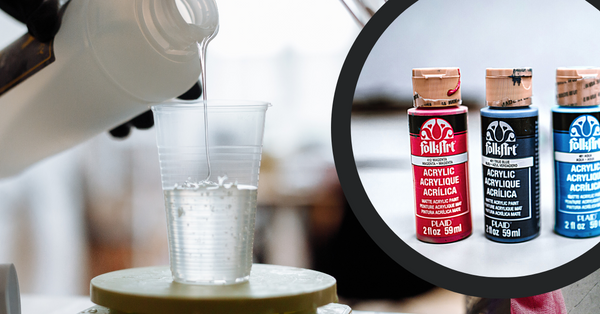
Can You Use Acrylic Paint on Resin?
6 Simple Steps to Creating Beautifully Painted Resin

